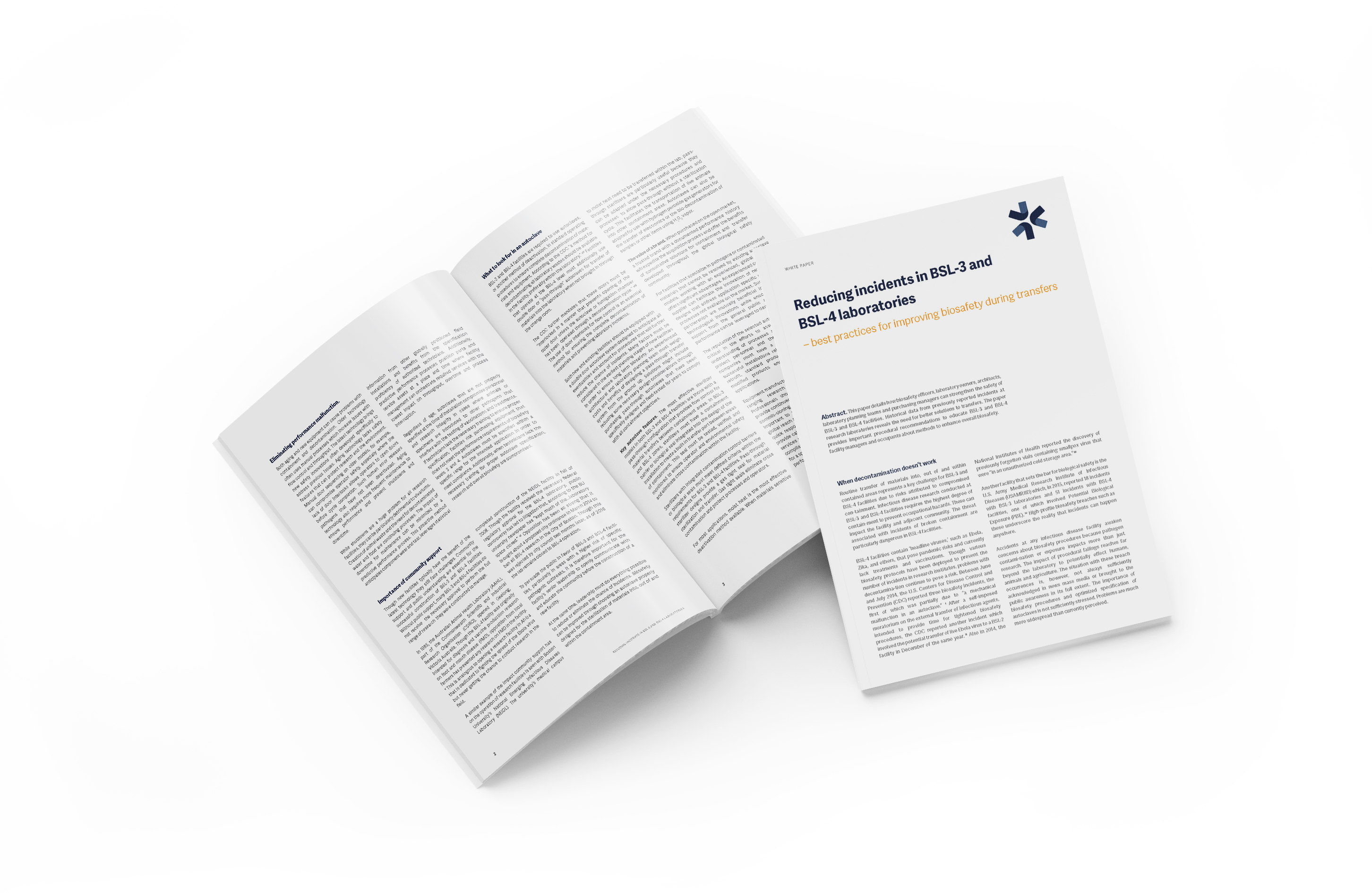5 Factors for Safe Material Transfer in BSL-3 and BSL-4 Facilities
Recent incidents in some of the world's most prestigious BSL-3 and BSL-4 laboratories highlight the fact that if proper protocols are not followed, contamination can cause detrimental results.
Transfers Leading to Incidents
In 2014, the U.S. Centers for Disease Control and Prevention (CDC) had a string of incidents that marked one of the worst occurrence numbers on record for the organization as three biosafety incidents were reported in a span of just two months. Workers in three CDC laboratories were potentially exposed to live Bacillus anthracis (anthrax) bacteria during the routine transfer of anthrax samples from a BSL-3 facility for research in two BSL-2 facilities. According to the CDC incident report, it was believed that the BSL-3 facility did not full deactivate the samples; a problem because the BSL-2 facilities were not correctly equipped to deal with live strain anthrax bacteria. A moratorium on the transfer of infectious agents from CDC BSL-3 or BSL-4 laboratories to any other facility was instated pending further investigation of this incident and laboratory transfer practices.
The CDC attempted to ensure no further breaches of containment were possible by integrating new safety protocols and retraining employees. Following the anthrax scare, it appeared the protocols were working until just a few months later in December 2014, a similar incident took place in a BSL-4 lab with the Ebola virus. A sample that was believed to contain live virus was inadvertently transferred to a lab with lower biosafety standards and the employee who handled the specimen had to undergo 21 days of monitoring for signs of the Ebola virus before returning to normal activities. While the sample turned out to have no live virus in the specimen, the breach could have resulted in a catastrophic outbreak and was caused by ineffective retraining techniques.
Assessing Risk in Operating Procedures
In one of the CDC anthrax incidents, workers did not wear the proper personal protective equipment (PPE) when handling the potential live strains, even though standard laboratory protocol required PPE be worn. Breakdowns in employee training and other risk factors must be identified and addressed to guard against future incidents. Continuously performing facility risk assessments can help identify procedures or processes that could lead to exposure or release of potential pathogens and can help define the corrective actions to be taken.
To prevent incidents like these, five factors critical to safe transfers should be considered by all labs.
1. Maintenance
Improper maintenance was a key contributor to the CDC anthrax incident. Autoclaves serve as the main line of defense against cross contamination between areas of containment. If not maintained properly they could fail to fully decontaminate samples for transfer. In the case of the CDC anthrax transfer, an improperly maintained autoclave only partially decontaminated the live strain anthrax which was then allowed to be transferred to other facilities. These incidents could have been avoided with a proper facility preventive maintenance schedule.
2. Proper Effluent Management
Poor maintenance not only puts facility workers at risk, but can affect the surrounding community as well. If the autoclave is not properly maintained, it is possible that it is not effectively decontaminating effluent which can result in a containment breach. Testing and servicing of autoclave and effluent systems can ensure that all effluent from the autoclave has been properly decontaminated and is safe to release.
3. Containment Barrier Integrity
Finally, containment barriers must also be continuously maintained and tested to ensure no leaks at the transfer ports. Most facilities perform daily leak testing, but to be permanently leak tight, the containment barrier must be integrated into the facility structure. Pass through sterilizer configurations have leak tight containment barriers integrated into the design, ensuring compliance with laboratory and BSL-4 requirements.
4 & 5. The Top Two Factors for Safe Transfers
The two final and most critical factors for safe material transfers regard flow control and process integrity within the laboratory but bring with them a host of additional considerations that are vital in reducing laboratory incidents. Discover how to reduce incidents by downloading our white paper on the "Best Practices for Improving Biosafety During Transfers" and learn more about flow control, process integrity and other key areas of biosafety enhancement.

